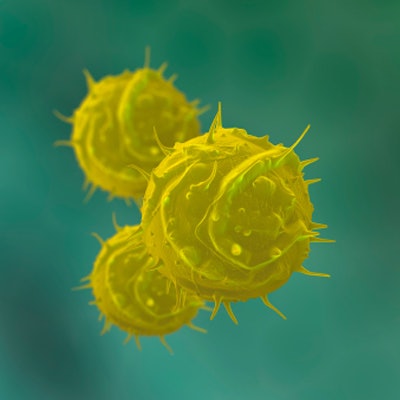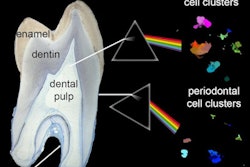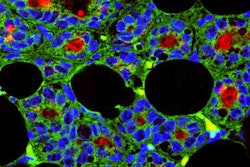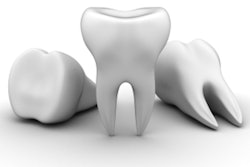
Growing whole teeth from dental stem cells? Likely a toothless proposition, according to a new review article on therapies based on dental stem cells. However, these stem cells are producing solid advances in implants and other areas that could bring therapies such as tooth root engineering to your office soon.
These technological advances include the possibility of the regeneration of dental pulp, periodontium, tooth root, and alveolar bone, according to the article authors (Expert Opinion on Biological Therapy, November 15, 2017).
"This review has shown that dental stem cell-based therapies offer great opportunities to change at least parts of the clinical practice in dentistry," they wrote. "Unfortunately, from our point of view, whole-tooth engineering is probably a dreamless dream for our near future."
The authors were Christian Morsczeck, PhD, a professor in the department of cranio- and maxillofacial surgery at University Hospital Regensburg in Germany, and Torsten Reichert, MD, the director and chairman of the department. Dr. Morsczeck runs a research group that studies stem cells that can be isolated from dental follicles.
The impossible dream
The existence of somatic stem cells in human dental tissue is no longer questioned, although more basic research is still needed on the various types of dental stem cells before clinical studies on their different uses can be conducted, the authors explained. They, therefore, authored the current paper to describe possible future treatments based on human dental stem cells and what they believe to be the necessary basic research before these stem cells could be used in regular dental treatment.
The types of dental stem cells include dental pulp stem cells, periodontal ligament stem cells, dental apical papilla stem cells, and dental follicle cells. Dental stem cells are useful for basic research, among other purposes, which can help develop new strategies for tooth repair, the authors noted. However, these cells are likely unsuitable for regeneration of whole teeth, in part, because human tooth development is relatively slow, they wrote.
Preclinical and clinical pilot studies have found dental pulp stem cells to be promising for pulp regeneration. One small study successfully used autologous human mobilized dental pulp stem cells in pulpectomized teeth, demonstrating probable safety and efficacy, although a larger randomized clinical trial is needed to further investigate the potential of regenerative endodontics. Dental pulp stem cells are also being considered for nondental applications, such as neural tissue regeneration and retinal repair, the authors reported.
Periodontal ligament stem cells, meanwhile, have shown promise in preclinical and clinical studies for the periodontium regeneration. Studies are investigating the use of periodontal ligament stem cells and other types of dental mesenchymal stem cells for treating periodontitis. Periodontal ligament stem cells can also be differentiated into nondental tissues and might be useful for cellular treatments of some organs and tissues.
Previous preclinical studies have shown that dental stem cells improve bone augmentation and healing of periodontal diseases, the authors noted. Clinical trials are now being conducted to confirm if these approaches are feasible.
Going metal-free
Meanwhile, stem cells from the dental follicle and the periapical papilla could be used in the future for generating biological tooth roots and regenerating alveolar bone.
“It is possible that dental implantology in the near future becomes a discipline without metal-based dental implants.”
"It is possible that dental implantology in the near future becomes a discipline without metal-based dental implants," the authors wrote. "Biological tooth root engineering could be implemented in the near future."
The production of biological tooth roots has been performed successfully in big animal models, and the same strategy could likely be applied soon in humans, according to the authors. This could be accomplished with autologous dental stem cells that are isolated and used directly or stored in a tooth bank before use.
"Sophisticated engineered biomaterials, for example, will direct the differentiation of dental stem cells such as dental follicle cells into cells of the tooth attachment apparatus," the authors wrote. "These biomaterials can be printed in a 3D printer according to the requirements of the regenerated tissue."
All of these technologies are already available, and such periodontic and endodontic treatments with dental stem cells have already been tested and will improve the landscape of tooth repair. Additionally, according to their assessment, success for these dental applications is more likely with dental stem cells than with other types of stem cells.
"These progressive stem-cell-based therapies will improve tooth longevity and therefore the quality of life in aging societies," the authors concluded.



















